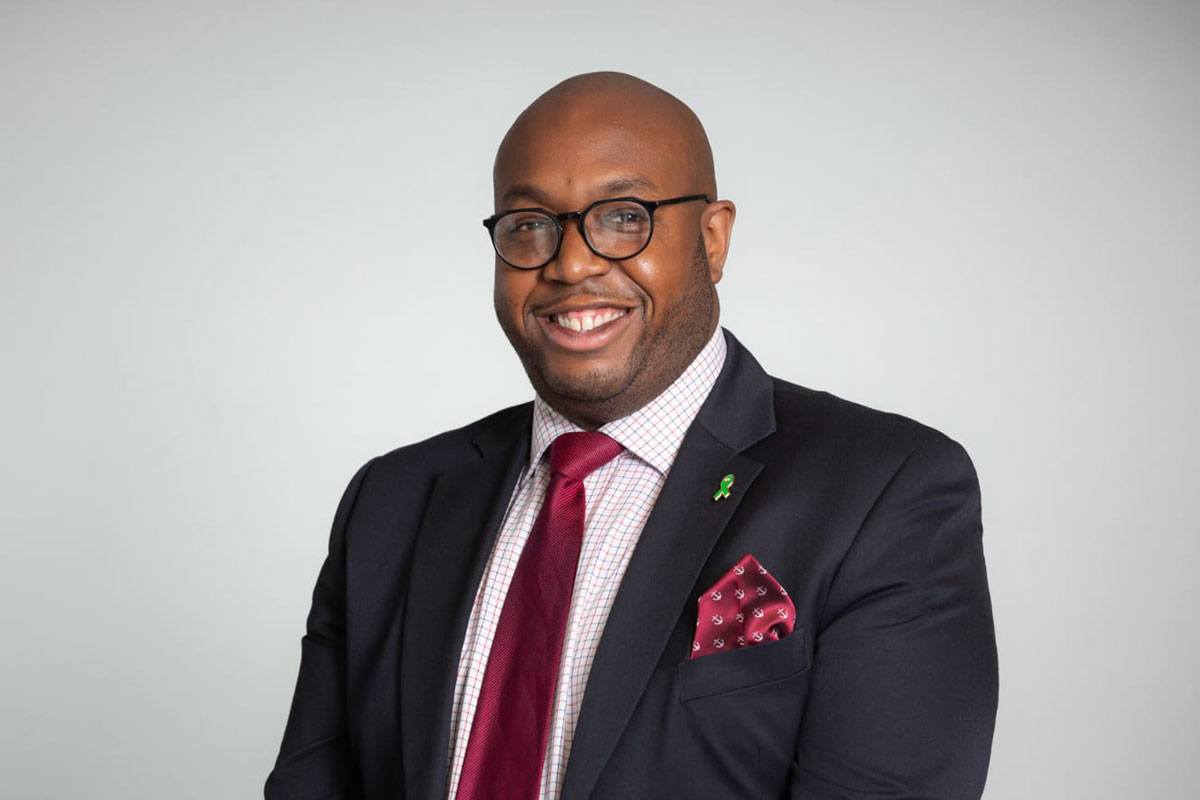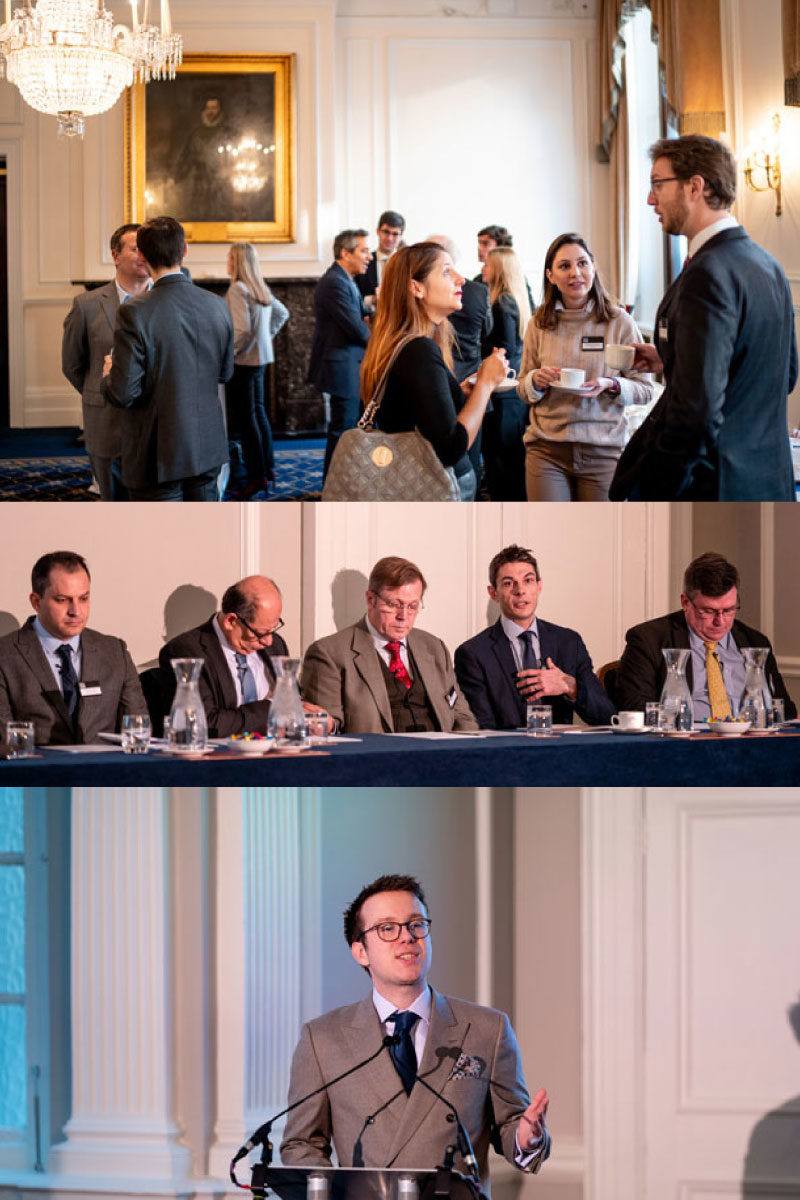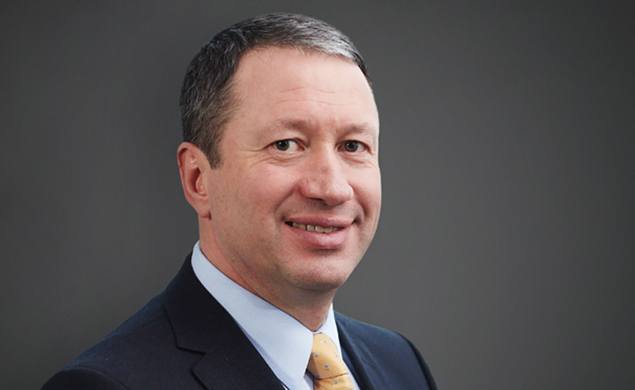New Zealand is a country that has a long history of being left off the world map, including on wall maps sold by Ikea and displayed at the Smithsonian Museum in Washington DC. Producers of A-level geography books and board games are also guilty of the omission.
Are New Zealanders offended? Not quite. They respond in typical Kiwi fashion: The government’s ‘404 page not found’ screen displays a map without the country on it (‘Something is missing’), and prime minister Jacinda Ardern teamed up with comic Rhys Darby to produce a video called ‘Off the map’.
Truth be told, New Zealanders know that life in their far flung corner of the world is pretty good – and that not everyone needs to be made aware of it. In many ways, Kiwis enjoy flying under the radar. Looking at the country’s legal market, lawyers consistently point out that international firms are not interested because ‘we are too small, too far away – even further away than Australia!’ Apparently, something beyond the imagination of many.
The only truly global firm with operations in New Zealand remains DLA Piper, which services the country out of Auckland and Wellington with a 25-partner strong team. It entered the market relatively recently, first forming an alliance with Phillips Fox in 2006, before becoming DLA Piper New Zealand in 2015. Asked if there is anyone else, lawyers just shrug their shoulders and point to Australian firm MinterEllisonRuddWatts.
Local firms know this is not necessarily a bad thing. Being a small market, lawyers don’t handle multibillion-dollar deals on a weekly basis, but for the most part enjoy a steady stream of work generated domestically and, to some extent, overseas. And it is often overseas work that draws lawyers away from New Zealand.
The main source of lamentation is the shortage, or sheer absence, of senior associates who flock to legal hubs, such as London or Singapore, to spread their wings. It is telling, however, that there is no lack of highly qualified partners – virtually all junior lawyers feel the pull towards home after some years spent abroad.
New Zealand enjoys a healthy economy powered by a few key industries, with dairy being the one to note (it is among the world’s top five dairy exporters), alongside agriculture, forestry, mining, and fishing; tourism and hi-tech, while relatively small, have seen continued growth over recent years. This means changes in key industries, such as the recent drop in dairy prices, are keenly felt.
However, firms have benefitted from uncertainty arising out of a host of regulatory changes introduced by Ardern’s new Labour government, and lawyers focused on the insurance sector remain busy handling claims related to the 2010 and 2011 Canterbury earthquakes.
In terms of local heavyweights, Bell Gully, Chapman Tripp, Simpson Grierson, Buddle Findlay, Russell McVeagh, Lowndes, Kensington Swan, and Anthony Harper are the major domestic firms that dominate The Legal 500’s coverage. Boutique firms continue to flourish in some parts of the market, notably Gilbert Walker in dispute resolution, Fee Langstone and Robertsons in insurance, and SBM Legal in employment.
Our historical data reveals that the top end of the market has become more competitive over the years. While Bell Gully enjoyed the pole position with a total recommendation count of ten for all practice areas back in 2014, this rank is now shared between Bell Gully, Chapman Tripp, and Russell McVeagh, all of which feature in every single practice area (14) covered by The Legal 500 in 2019.
Remarkably, Chapman Tripp achieved 13 top tier rankings in 2019, with labour and employment its only practice to fall short of the top spot. Unsurprisingly, the firm also achieved the best ratio of total recommendations (69) to top tier recommendations (56) between 2014 and 2019.
Bell Gully leads the pack in terms of leading individual rankings, with 145 lawyers highlighted between 2014 and 2019, while DLA Piper’s had 37 leading individuals listed and six top tier recommendations for the same period, the best ratio in the market. In terms of development, Buddle Findlay made the biggest jump, from one top tier ranking in 2014, to six in 2019.
Further areas of growth are on the horizon, mostly due to increased regulatory oversight, cyber security concerns, infrastructure projects, and the overseas investment regime. Looking at the available work, New Zealand is definitely a good place to be, even though it can’t be found on every map.
Diversifying practices
Haydn Wong, managing partner of Bell Gully
How are client demands in New Zealand changing?
Our clients are always keen to discuss more innovative ways that we can deliver our advice and support to them. Certainly, technology continues to play an important role in reshaping service delivery, including requiring the ability to analyse and re-package large amounts of data in advising our clients.
As we see the role of general counsel evolve to include: protecting and enhancing their company’s reputation with a range of stakeholders, compliance and risk management, and managing the regulatory environment, our advice and support needs to be cognisant of the interplay of these broader factors with the legal context.
However, the core components of what our clients demand from us has not changed: deep understanding of their environments, timely, relevant and expert advice and support, a real determination to achieving their commercial outcomes, and meeting their value expectations.
How are you adapting to these changes?
We have further diversified our areas of expertise, with our partners and staff taking market leading positions in new or developing areas of law such as fintech, cybersecurity, defamation and privacy, and data protection. Developing dedicated and tailored experience allows us to build stronger relationships with our clients and opens up new markets for us.
Although our fundamental role has not changed, our teams must be adaptable. Where there are different approaches or platforms that provide better outputs for our clients or provide enhanced management of their costs or risks, we will support these.
We are also aware of how creating a diverse and inclusive environment for our people will improve the service we provide, so we are actively pursuing a number of initiatives focused on maintaining and enhancing the diversity of our workplace.
Where are you seeing growth?
We are seeing significant growth across the board in New Zealand, with very solid transactional volumes for our M&A, property and finance groups, and our disputes and tax teams being very active.
The continued growth and focus of regulatory oversight, partly in response to Australian initiatives, has generated the need not only for specific advice and support but also restructuring and M&A transactions as clients respond to the environmental changes.
Infrastructure projects across New Zealand are a major growth area for us. Our projects and development team, which brings together our development, construction, resource management and finance experts, has had leading roles in most of the nationally important road and transport projects. We are also seeing new demand in domestic growth areas such as aged-care and securitisation, where we are enhancing our market positioning.
Fintech and cybersecurity are getting a lot of attention domestically. This includes understanding upcoming reform of New Zealand’s Privacy Act as well as compliance with international standards such as EU General Data Protection Regulation. We have also been following the Cryptopia hack closely as these types of events will become more common in the future.
Energy and climate change has been a major area for the firm over the last 12 months as well. Recently the Independent Expert Advisory Panel for the Electricity Price Review released its options paper which could have significant implications for the electricity sector.
Climate change remains an issue for all New Zealand businesses, especially if the Zero Carbon Bill passes into legislation. Business leaders are starting to position themselves for a reduced emissions economy and shifting their internal agenda accordingly.
Our international clients are often focused on our overseas investment regime and the legislation and government policy applicable to this area. We have a dedicated overseas investment team, who are constantly advising and updating clients on Overseas Investment Office matters.
How do you set yourself apart from the competition?
Our outstanding client base continues to trust us with their most important and strategic legal work, which leads to roles on many of New Zealand’s most significant transactions and disputes.
For us, this starts with building and maintaining longstanding relationships with our clients, and knowing their business and strategic goals. This enable us to provide strong contributions to the achievement of their goals. These elements are core to the Bell Gully offering.
Advice by war story
Martin Wiseman, country managing partner of DLA Piper
How are client demands in New Zealand changing?
Senior in-house counsel increasingly want ‘advice by war story’ from experienced lawyers who are in the stream of things and can provide commercial, insightful, strategic advice on market practice, options and how a court or regulator will view something according to the prevailing conditions which are under continuous change.
In short, they want value, not cost, and are less inclined to support a leveraged model. I think clients are increasingly able to differentiate between the qualities of different firms and will choose horses for courses from their legal panels.
Legal panels are being shrunk and a lot of thought is going into their structure with the intention of the client investing in the firms and the firms investing in the client.
Finally, clients are increasingly wanting the support of a client-relationship partner who may not do any legal work for them but is absolutely attentive to sourcing their evolving legal needs.
How are you adapting to these changes?
By having the right client-relationship partners in place. By client listening. By having post-tender debriefs. By having more work done at senior level with less reliance on the leveraged model. By the application of global firm resources to cut operating costs and provide additional, perhaps non-legal, resources to clients.
How do you set yourself apart from the competition?
As part of DLA Piper our access to global resources, infrastructure, IP and expertise is simply unrivalled by any other law firm in New Zealand. Global resources and buying power are reducing our operating costs.
At the same time global IP and expertise is adding to the value we offer clients. Clients are seeing that very clearly now and seeking us out. Especially NZ clients with overseas operations and overseas clients with NZ operations or investment plans.
We’ve long regarded pro bono as an important aspect of our lawyers’ professional responsibility and development. Our global pro bono initiative, New Perimeter, provides long-term pro bono legal assistance in under-served regions around the world and our New Zealand lawyers are actively involved.
Locally we have a 26-year pro bono legal relationship with the Starship Foundation. This is something we’re immensely proud of. As a further commitment to access to justice and the rule of law we have recently appointed special counsel Melissa Johnston as pro bono director for New Zealand.
The ability to bring our authentic selves to work, every single day, is fundamental to our values at DLA Piper. In New Zealand, our commitment to diversity and inclusion (D&I) has led to the creation of several sub-committees – promoting an inclusive work environment for all colleagues regardless of age, gender, cultural identity, or sexual preference.
A third of DLA Piper New Zealand’s people are members of a D&I committee. However, it is not a set and forget exercise. It’s about real people in an ever-changing world. Our commitment to creating an environment where people bring their whole selves to work is a journey that will continue well into 2019 and beyond.
Where are you seeing growth?
Starting with overseas clients, we lead in cross border M&A into NZ. We are seeing deals in FMCG, primary produce, tech start-ups, and agricultural robotics. We’re also continuously doing the NZ end of global restructures and M&A for multinationals.
Locally everything has an IPT angle, that’s the real growth area. Compliance across privacy, health & safety, financial services regulation – you name it – is huge. And locally, in M&A, we’re seeing baby boomers sell out, often to PE, and vertical integration as businesses all over attempt to take costs out of supply chains, which is being driven by end user consumers. In government, and local government, projects are going to be big.
Finally, I think litigation funding will continue to grow especially once the Law Commission finalises its views on any regulatory settings.
Accountability and value for money
Nick Wells, chief executive partner at Chapman Tripp
How are client demands in New Zealand changing?
Demands are changing as clients are reacting and adapting to New Zealand’s business and economic landscape. In turn, it is changing fast in New Zealand: for the moment the country’s outlook is reasonably positive with the economy expected to grow at an annual rate of 2.7% to 3%. The New Zealand government accepts, however, that could change quickly in an uncertain international environment.
At the same time, the government is focused on introducing a wellbeing programme and measurement that will sit alongside New Zealand’s traditional annual budgetary processes; dairy prices are starting to slowly recover.
The most immediate impacts of a relatively high level of global uncertainty include: more European investments to New Zealand perhaps linked to the uncertainties of Brexit; slower rate of investment and economic activity from China, given the issues around Huawei, and in common with other countries in the Five Eyes, such as Canada and the US, the New Zealand – China relationship is under some pressure; and we do expect a decline in New Zealand’s major trading partners as on average (other than China) their rate of economic growth slows to 2% and in some cases lower.
In addition, the current regulatory developments will have direct interest to business, from the Reserve Bank of New Zealand (RBNZ) Bank Capital Review, to Financial Sector culture and conduct and Privacy Law. In reaction to such a busy environment and based on environmental and social components:
- the digital transformation with the impact of technology also driving innovation in the legal sector;
- data analytics and smart contracting also on the rise;
- inter-generational expectations, wellbeing, and talent attraction and retention; and
- more choices of legal firms and service offerings that drive a stronger need and focus on trusted relationships with law firms and individual lawyers, as well as a value for money that require clients’ to be accountable their legal spend.
Another change to note as a flow on effect around accountability and value for money is the rise of the procurement function. Procurement teams tend to drive the purchasing process through a balanced approach to buying services, which tends to eliminate the influence of strong relationships.
In the face of this changing environment, Chapman Tripp continues to work hard to remain New Zealand’s leading law firm, by keeping abreast of these developments so that our clients can both exploit new opportunities and mitigate against uncertainties.
How are you adapting to these changes?
We need to continue to listen to our clients and work in a way that best services their needs, it is as straight forward as that.
The legal world is becoming more fast-paced and we regularly work alongside our clients to deliver a service that is fit-for-purpose and value for money. For example, we identified early the need for our clients to embed technology into their day-to-day activities and launched our technology and innovation business, Zeren, in 2017. By using technology to deliver legal documentation and advice in new ways, we are saving our clients time and money, and enabling them to serve their own clients.
Our clients and people are at the heart of everything we do. As Chapman Tripp’s chief executive partner, I believe I have a part to play for New Zealand and make a difference.
With our people, we have ensured that our values and policies support their needs and expectations: our wellbeing programme is an example of ensuring we attract, retain, and grow them. We also take pride in working pro-bono and community focused initiatives: our corporate social responsibility programme focuses on supporting NZ Inc., youth and education, and the arts.
How do you set yourself apart from the competition?
In addition to being the New Zealand leading firm, I believe we set ourselves apart with our people: we attract and retain the best in the field, and we provide a meaningfulness of work – from having strong values, to feeling values and working in a transparent environment.
I believe by nurturing and growing our people, they will in turn give back to you creating a strong environment for New Zealand, one that balances the needs of our people, our community, and commercial interests.
We want our clients to have the best in market client experience, centred around them, fostering the co-creation of solutions together – we put our clients at the centre of everything we do. We are continually improving the way we work with our clients so that we are easier to work with.
Where are you seeing growth?
Our recent key trends and insights publications (i.e. What next for infrastructure, New Zealand Equity Capital Markets, New Zealand Mergers & Acquisitions, Te Wake Ture’s Tikanga Māori in the law and the Māori-Crown relationship and Impact Investment) have predicted where we expect growth and where there is likely to be less activity. These include:
- further changes in investment patterns with healthier capital markets, in the form of increased IPO activity (although we expect a further decline in the number of issuers on the NZX Main Board);
- the prospect of a downturn in mergers and acquisitions volumes and values, with the dive in business confidence, change in consumer confidence, a softening housing market, and of course, the escalating trade tensions. We have noticed more European investments in New Zealand with the uncertainties of Brexit, combined with a fall in Chinese investment, no doubt due to the strained New Zealand-China relationship;
- New Zealand is often admired for the efforts put in by successive governments over the last 23 year to reconcile grievances with Māori, as the indigenous people of New Zealand. Those efforts continue and we remain at the forefront of negotiations and legal developments aimed at that reconciliation;
- fast-growing demand for green bonds, in line with Australia; and
- bold action by the government to address the country’s infrastructure problems – from investment and funding to capabilities and innovation solutions, climate change, and construction capacity as New Zealand’s population and needs continues to grow.
The senior lawyer demand
Paul Beverley, National Chair at Buddle Findlay
How are client demands in New Zealand changing?
Client expectations are evolving but I don’t think they have changed fundamentally. Clients expect high quality, focused, and responsive service and that has consistently been the case for some time.
The primary focus for many of our clients is the level of expertise. Clients still look to us for legal expertise, but they are increasingly looking for knowledge of their business, their industry sector and their market. They are looking for advice but also for commercially-savvy problem solving.
Increasingly, when clients need our input, they want to talk to a partner or senior level lawyer. That can be challenging for our younger lawyers who are very capable and need to learn about developing and managing client relationships. That’s a challenge we have to meet in terms of helping them to manage their careers and aspirations. It’s also tough on partners and senior lawyers, who are in high demand.
Clients increasingly expect responses now, so we have to be able to deal with client requests anytime, anywhere. It’s important to have that personal contact with our clients, so those of us who lead client relationships are frequently finding innovative ways to be able to respond quickly.
Legal spend is always under the spotlight and clients are increasingly interested in innovative fee arrangements and pricing certainty.
Clients continue to do a lot of legal work in-house, and in-house teams in New Zealand are generally very sophisticated buyers of targeted external legal support. They tend to strike a careful balance between what work they do themselves, what they brief and to whom.
As external providers, we need to work alongside and complement those in-house teams. That means building strong relationships with corporate legal teams and becoming a natural extension to them. It’s an opportunity to build fit for purpose and market facing legal teams.
How are you adapting to these changes?
We are constantly seeking to evolve to meet evolving client needs. We are designing our offering and teams to meet the market expectations around access to senior lawyers and responsiveness.
We work alongside our clients, and often with their other external advisers. Our clients expect a collaborative approach to those situations. It’s important to establish good relationships with our clients’ other advisers and focus, with them, on the desired results.
We have to be cost effective and always strive to add value by tailoring our initiatives to clients’ needs. It’s all about a clear focus on how we can add value. That’s a different place compared to 15 years ago. Often, external firms were, in effect, the in-house teams for large corporates. On the whole, in-house teams were not particularly large. The in-house teams are sophisticated buyers of legal services and have a very clear picture of what quality service and value for money look like.
We actively seek feedback from our clients. We encourage open and honest feedback on the quality, timeliness and value of our work, and ask for it on a regular basis.
How do you set yourself apart from the competition?
There are a number of really strong firms in the New Zealand market, each with their own strengths. We believe Buddle Findlay’s strengths are our culture, our very strong emphasis on an exceptional client experience, and our value proposition.
Put simply we put our people first, and we have a fantastic group of lawyers who relate well to our clients and provide pragmatic and solution-focused advice. It’s a strong foundation that we are working hard to maintain and build on.
Where are you seeing growth?
The global economy is a little weaker this year, influenced by US/China trade relations and Brexit uncertainty. The local economy reflects that uncertainty as well and there may be a slowdown in foreign investment in New Zealand this year.
There’s a lot to be positive about. Our corporate/commercial team is being kept busy in a competitive environment. There is still interest in investment in good New Zealand businesses, particularly from China, and we have a dedicated and busy Asia-focused business practice.
The central and local government sectors are both active and busy areas of the firm.
There are a number of very large infrastructure projects in place that will continue including in Auckland and Wellington and we continue to be busy in the infrastructure area.
Being top heavy
Mark Lowndes, managing director of Lowndes
How are client demands in New Zealand changing?
Our experience is that clients expect more clarity over costs, they decide how much legal input they want to buy for a matter, they have a low tolerance for high priced junior lawyers, and timeframes are getting shorter.
Clients often know the basics of the legal issues and are looking more for advice that comes from experience and specialisation. They are less likely to brief us on the more administrative areas of practice.
All this is occurring in the context of growing in-house teams in larger companies.
Despite all the changes, there remains a strong demand for the experienced trust advisor role.
How are you adapting to these changes?
Where possible we have moved towards offering cost estimates and fixed costs in place of open-ended hourly rate charging. We take more time to discuss with the client the scope of what they want, the timing and how they want our work product presented so it is tailored for how they will use our work.
We are increasingly focused on work being done by senior, experienced lawyers.
We continue to invest heavily in technology to keep driving efficiency including with mobile working.
We continue to recruit lawyers who have business degrees and commercial experience so our advice is genuinely commercially focussed.
How do you set yourself apart from the competition?
Our firm has always been deliberately ‘top heavy’. We have built the firm by recruiting senior lawyers from major firms, who at our firm can enjoy advising and working directly with the clients and being freed from committees and supervising teams of lawyers. Our clients like dealing with those senior lawyers directly. Our clients value their experience as well as the technical knowledge.
We have a large international footprint through our many multinational clients, associations with international law firms, a range of law firm networks, involvement with international bar associations, and a focus on international business and investment. About a third of our turnover comes from overseas clients. This also means we can provide our clients with trusted legal advice from any commercial centre in the world.
Our management and remuneration model is modern and flexible. The firm was founded 22 years ago, however, it embodies many of the ‘New Law’ concepts which is attractive to those lawyers who join us from ‘Big Law’ and in our view has set us up well to respond and adapt to clients’ changing demands.
Where are you seeing growth?
Transactional work is busy at the moment as is litigation, intellectual property, banking and finance, and property. Also there is a little more insolvency work coming in. There is a fair amount of private equity activity. We are seeing continuing interest in New Zealand from Australia, Asia, and the US, and some from Latin America.









